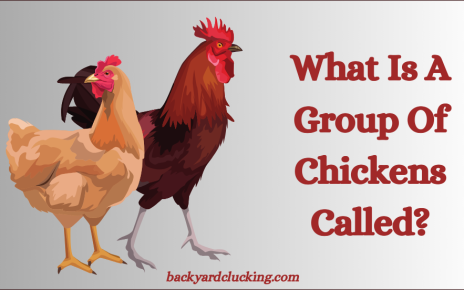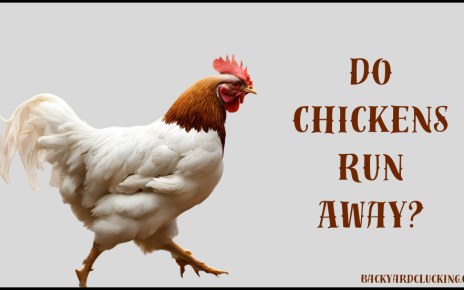Anatomy of Chickens and Their Skeletal System:
Chickens, the Gallus gallus domesticus species, are among the most widely known and versatile domesticated animals. Despite their popularity, many misconceptions exist about their anatomy and skeletal system.
As a biologist, I will guide you through the fascinating world of chicken anatomy and help you understand the intricacies of its skeletal structure.
Chicken Breeds: An Overview
The chicken species Gallus gallus domesticus has been domesticated since ancient times and is now bred in numerous varieties worldwide. Depending on the breed, chickens can vary significantly in coloration, size, shape, and other physical characteristics.
They have been bred for various purposes, such as egg production, meat production, showmanship, ornamental plumage, and more. In this article, we will look closer at the varied world of chicken breeds and explore their different features.
Classification
The primary classification system for chickens is based on the bird’s intended purpose, such as egg or meat production. This system is known as Primary Use Classification (PUC), which is further divided into two categories: Dual-purpose breeds and Single-purpose breeds.
Dual-purpose Breeds
As the name implies, dual-purpose breeds are those chickens bred to produce eggs and meat. These birds usually have a moderate growth rate, making them suitable for egg and meat production.
Examples of dual-purpose chicken breeds include:
- Australorps
- Plymouth Rocks
- Orpingtons
- Wyandottes
- Rhode Island Reds, and many more.
Single-purpose Breeds
Single-purpose breeds are chickens bred for a specific purposes such as egg production, meat production, ornamental plumage, etc. Depending on the breed, these birds tend to have either slower or faster growth rates than dual-purpose breeds. Examples of single-purpose breeds include Leghorns (egg production), Cornish Crosses (meat production), Silkies and Frizzles (ornamental), and many more.
Chicken Anatomy: An Overview

Chickens are birds and thus share numerous similarities with other bird species in terms of their anatomy. Their bodies are divided into 3 main sections: the head, the trunk, and the extremities. The head houses the brain, eyes, ears, beak, and unique comb and wattle structures. The trunk is the central part of the body, housing organs such as the lungs, heart, and digestive system. The extremities consist of the wings and legs, essential for various locomotion and social behaviors.
The Skeletal System of Chickens
The chicken’s skeletal system comprises around 200 bones, with numerous adaptations that render them lightweight and efficient. The system is subdivided into axial and appendicular skeletons. The axial skeleton have the skull, spine, and rib cage, whereas the appendicular skeleton comprises the limbs and pectoral and pelvic girdles.
Spine
The chicken’s spine can be divided into five sections – cervical (neck), thoracic (upper back), lumbar (lower back), sacral (pelvic), and caudal (tail). A chicken typically has 14 cervical, 7 thoracic, 14 lumbar, 5 sacral, and 6 caudal vertebrae. Notably, the cervical vertebrae in chickens allow for greater neck flexibility compared to mammals.
Legs
Chickens have a pair of legs with three main parts:
- The femur (thigh bone)
- Tibia and fibula (two major shin bones)
- The tarsometatarsus (a fusion of the foot bones)
Interestingly, the chicken’s knee joint points backward, leading to the mistaken idea that their knees bend the opposite way. What we see is their ankle joint.
Skull
The chicken skull is lightweight and modified to accommodate the bird’s specialized beak, which replaces teeth. It consists of several fused bones, with large eye orbits and nasal openings. Unlike mammals, chickens possess a single occipital condyle, allowing for more significant head movement.
Thorax
The thoracic region houses the bird’s keel, a prominent extension of the sternum (breastbone) that is a primary attachment point for the flight muscles. The thoracic vertebrae are also fused to provide rigidity for proper flight posture and muscle support.
The Chicken Rib Question: Does Chicken Have Ribs?
Yes, chickens do have ribs! A chicken’s ribcage usually comprises 7 pairs of ribs. The first rib is attached to the thoracic vertebrae, while the other six pairs articulate with the thoracic and sternum. The ribs are crucial in supporting the chest cavity and protecting the internal organs, such as the heart and lungs.
Unique Characteristics of the Chicken Skeletal System
Chickens have several remarkable features in their skeletal system that reflect their evolutionary lineage and adaptations. They possess a pair of collarbones, or clavicles, which are absent in most other birds. This bone is important in connecting the shoulder girdle to the sternum. Additionally, chickens have fewer bones than other vertebrates and lack certain bones found in mammals, such as a collarbone and kneecap.
Conclusion
The chicken is one of the most important domesticated animals and an excellent food source for humans and other animals. It has an intricate skeletal system adapted to its particular needs, with numerous features that set it apart from other vertebrates.
This article gives a brief overview of the chicken’s anatomy and skeleton, revealing why chickens have ribs and how their skeleton enables them to move about uniquely.
From the lightweight skull structure to the backward-facing knee joint, chickens have some of the most fascinating anatomical features among birds. Now that you have a greater understanding of their anatomy and skeletal system, I am sure you will appreciate them even more.




